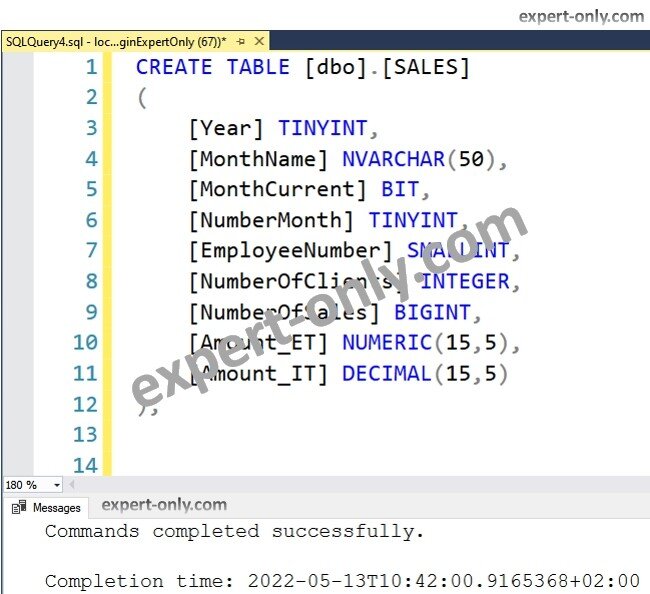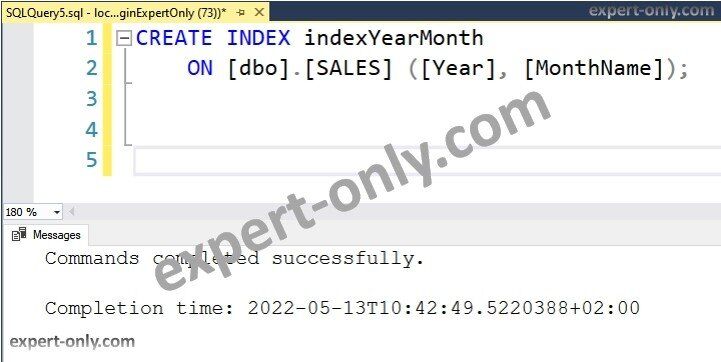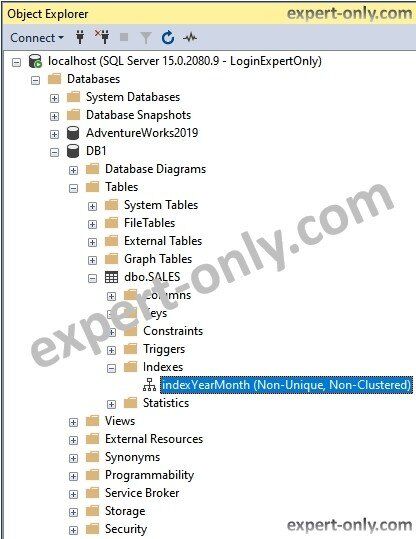Create an index in SQL Server to improve the performance of queries on tables and in clustered views. Two types of indexes exists, the clustered and the nonclustered one.
To create a non-clustered index, use this example and adapt it to the project requirements. Indexes are the first recommended step to performance optimization in SQL Server.
Create a SQL Server non clustered index on a table
First, the how-to section below creates an index on the sales table created here.
Let’s explain the context of the example. Firstly, it’s a very basic example to show the CREATE INDEX T-SQL command and how easy it is to optimize performance.
Secondly the two indexed columns are the typical ones used in large queries execution, i.e., the Year and the month. Another very common one is the date.
Why the large sales tables need to use some date related columns as indexed columns ?
Let’s consider any business, the managers need to see the figures in a context to know how good the sales are. To achieve this the time is the best dimension, because the time comparisons are the most common and because the business financial managers use fiscal year as references.
Popular views are the yearly, quarterly, monthly, and daily ones. and as the data evolves along the fiscal year, indexes evolves and follow the date.
Step 1: Create the sales table to be indexed
For instance, the sales tables have this initial structure. Use the following SQL code to create the sales table as an example for the index creation.
CREATE TABLE [dbo].[SALES] ( [Year] TINYINT, [MonthName] NVARCHAR(50), [MonthCurrent] BIT, [NumberMonth] TINYINT, [EmployeeNumber] SMALLINT, [NumberOfClients] INTEGER, [NumberOfSales] BIGINT, [Amount_ET] NUMERIC(15,5), [Amount_IT] DECIMAL(15,5) );

Step 2: Create the SQL Server index on the sales table using this syntax
Finally, let’s consider that on our Analytics system the main columns to filter data. It’s the year and the month name: Year and MonthName.
CREATE INDEX indexYearMonth ON [dbo].[SALES] ([Year], [MonthName]);

Step 3: Check the index presence and type under the table in SSMS
Expand the sales table properties and check the index presence. Note that per default the index is a non-unique and non-clustered index.

Notes:
- Use an existing table to create the index or create a new table that needs to be indexed.
- Use the SQL Server Management Studio (SSMS) software to perform the steps and execute the queries.
Moreover, check the below T-SQL examples. Hence, the code is ready to copy and paste, so simply adjust it and execute in SQL Server Management Studio.
As a result, any query using the Year and the Month in the where clause uses the newly created index. In other words, the indexYearMonth index improves the performance of the query. The index maintenance like reorganize and rebuild commands keeps them effective.
To go further, the next step is to analyse and rebuild the index to organize values inside the index and statistics.
In conclusion, let’s hope you enjoyed this tutorial. It’s also available below for download and offline reading in PDF format.
It is a MS SQL tutorial on how to create a SQL non cluster index in PDF format.
Here is another tutorial from the T-SQL series on the PIVOT SQL Server query to turn rows in a table into columns.







Be the first to comment